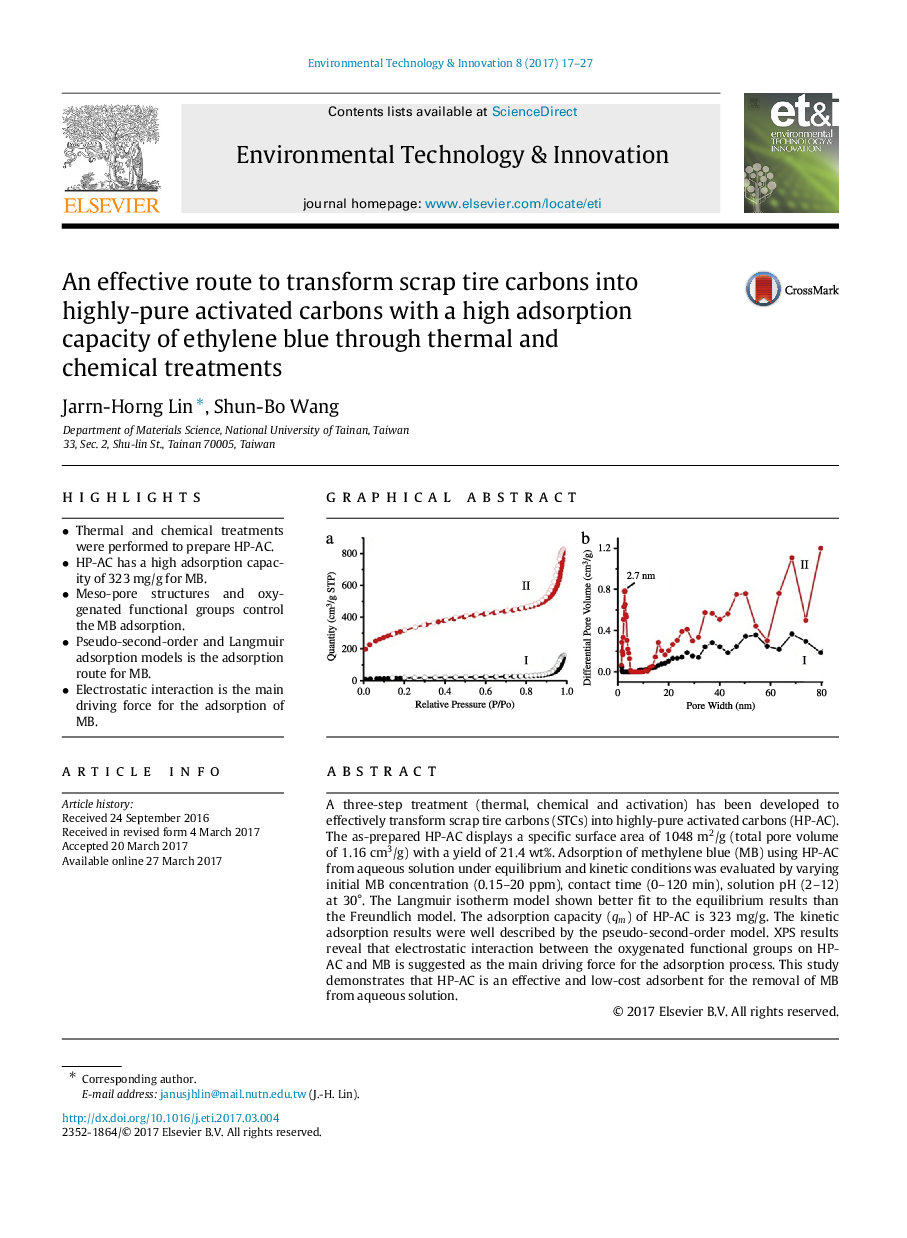| Article ID | Journal | Published Year | Pages | File Type |
|---|---|---|---|---|
| 5749587 | Environmental Technology & Innovation | 2017 | 11 Pages |
â¢Thermal and chemical treatments were performed to prepare HP-AC.â¢HP-AC has a high adsorption capacity of 323 mg/g for MB.â¢Meso-pore structures and oxygenated functional groups control the MB adsorption.â¢Pseudo-second-order and Langmuir adsorption models is the adsorption route for MB.â¢Electrostatic interaction is the main driving force for the adsorption of MB.
A three-step treatment (thermal, chemical and activation) has been developed to effectively transform scrap tire carbons (STCs) into highly-pure activated carbons (HP-AC). The as-prepared HP-AC displays a specific surface area of 1048 m2/g (total pore volume of 1.16 cm3/g) with a yield of 21.4 wt%. Adsorption of methylene blue (MB) using HP-AC from aqueous solution under equilibrium and kinetic conditions was evaluated by varying initial MB concentration (0.15-20 ppm), contact time (0-120 min), solution pH (2-12) at 30°. The Langmuir isotherm model shown better fit to the equilibrium results than the Freundlich model. The adsorption capacity (qm) of HP-AC is 323 mg/g. The kinetic adsorption results were well described by the pseudo-second-order model. XPS results reveal that electrostatic interaction between the oxygenated functional groups on HP-AC and MB is suggested as the main driving force for the adsorption process. This study demonstrates that HP-AC is an effective and low-cost adsorbent for the removal of MB from aqueous solution.
Graphical abstractDownload high-res image (218KB)Download full-size image
